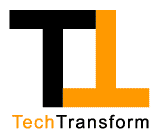What's SOAP?
Soap, yeah soap
|
"Yeah, so we'll use soap to interface our tracking system with WebLogic". If you've ever nodded understandingly at this type of statement but had no idea what SOAP was, here's your quick primer.
According to Darwin, soap (simple object access protocol) describes how one application talks to a Web service and asks it to perform a task and return an answer. SOAP makes it possible to use Web services for transactionsósay, credit card authorization or checking inventory in real-time and placing an order.
It's all part of the bigger world of web services.
Darwin has a great article about it. Author Sari Kalin says: Web services let companies bridge communications gapsóbetween software written in different programming languages, developed by different vendors or running on different operating systems.
Kalin cautions : One important thing to remember is that Web services aren't used to build new systems from scratch. Rather, they're a tool to use with existing computer systems that you want to stitch together to create something new. "You still need your customer relationship management application, your core database, your application servers," says Evan Quinn, chief analyst at the Hurwitz Group, a consultancy in Framingham, Mass. "You still need to have a good infrastructure and rich computing resources."
Read the Darwin article (originally reported in the Web Business Insights newsletter.)
Something else you can tell them: there's an evil little secret about Web services that most vendors don't talk about. Web services' protocols are very fat, and that means that Web services interactions over the network will be slow and eat up a large chunk of bandwidth. That's because Simple Object Access Protocol (SOAP) is an Extended Markup Language (XML)-based messaging format that provides the middleware glue that binds Web Services together. In turn, that means SOAP includes both text-based XML tags for every data field and that all that data is also in text.
This little secret, and the remedy, in this article on ZDNet Tech Update (reported in the Telecom newsletter).
|
Copyright © 1996-2011 Riggs Eckelberry Marketing Group, Inc. All Rights Reserved
TechTransform and the interlocked "T" are trademarks of REMG, Inc.
